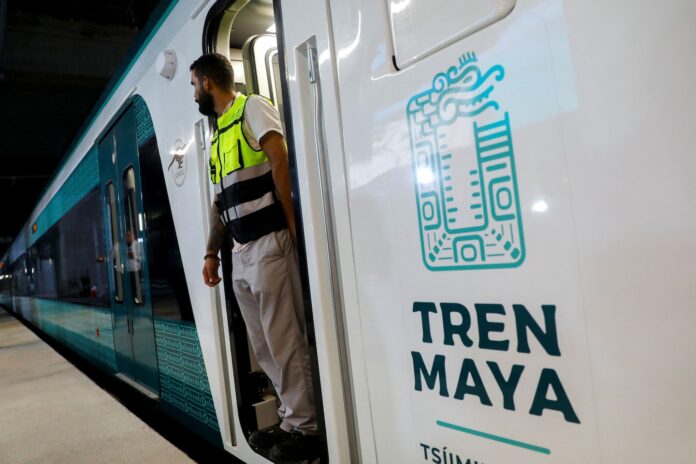On Saturday, Mexico’s Maya Train took its inaugural trip from Cancún to the Gulf Coast city of Campeche. If all goes as intended, the highly ambitious and controversial project will provide travelers with an alternative to driving long distances between major attractions on the Yucatán Peninsula. However, with one phase partially ready and two still incomplete, the train remains shrouded in uncertainty and unknowns.
“There could be a good way to use a train to cover the area, but to cut to the chase, the whole process has really lacked a lot of transparency,” said Zachary Rabinor, founder and chief executive of Journey Mexico, a luxury travel company that has been running trips south of the border since 2003. “I don’t have a lot of answers to the specifics about the cost of tickets or when the track will be ready, largely because that information has been very difficult to ascertain.”
Mexican President Andrés Manuel López Obrador inaugurated the train, which is estimated to cost as much as $28 billion, on Friday. The following day, the first two trains — running in opposite directions — departed hours behind schedule, according to the Associated Press.
When complete, the railway will feature 34 stations or stops in five southeastern states: Campeche, Yucatán, Quintana Roo, Chiapas and Tabasco. The train will transport visitors along both coasts and inland, which has been less accessible than the more developed beach resort and urban areas. With more than 947 miles of track, the Maya Train surpasses the distance of Great Britain from top to bottom, the Mexican Embassy in Washington said.
“There is a large section of the interior of the peninsula that doesn’t have highways or roads,” said Marilyn Masson, professor of anthropology at the University at Albany SUNY, who has been working in Mexico for nearly two dozen years. “In the more remote sections, the train could potentially help these communities be better connected to the outside world.”
Here is what we know about the railway so far.



